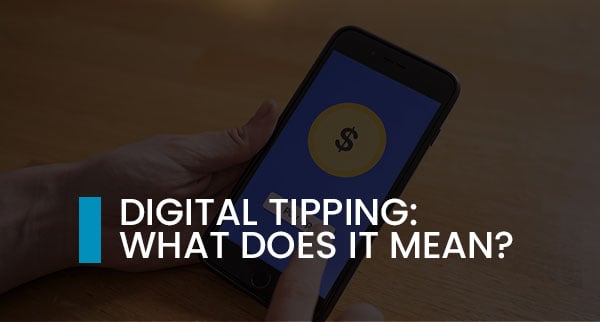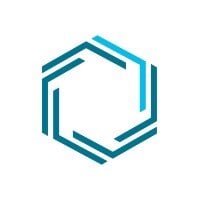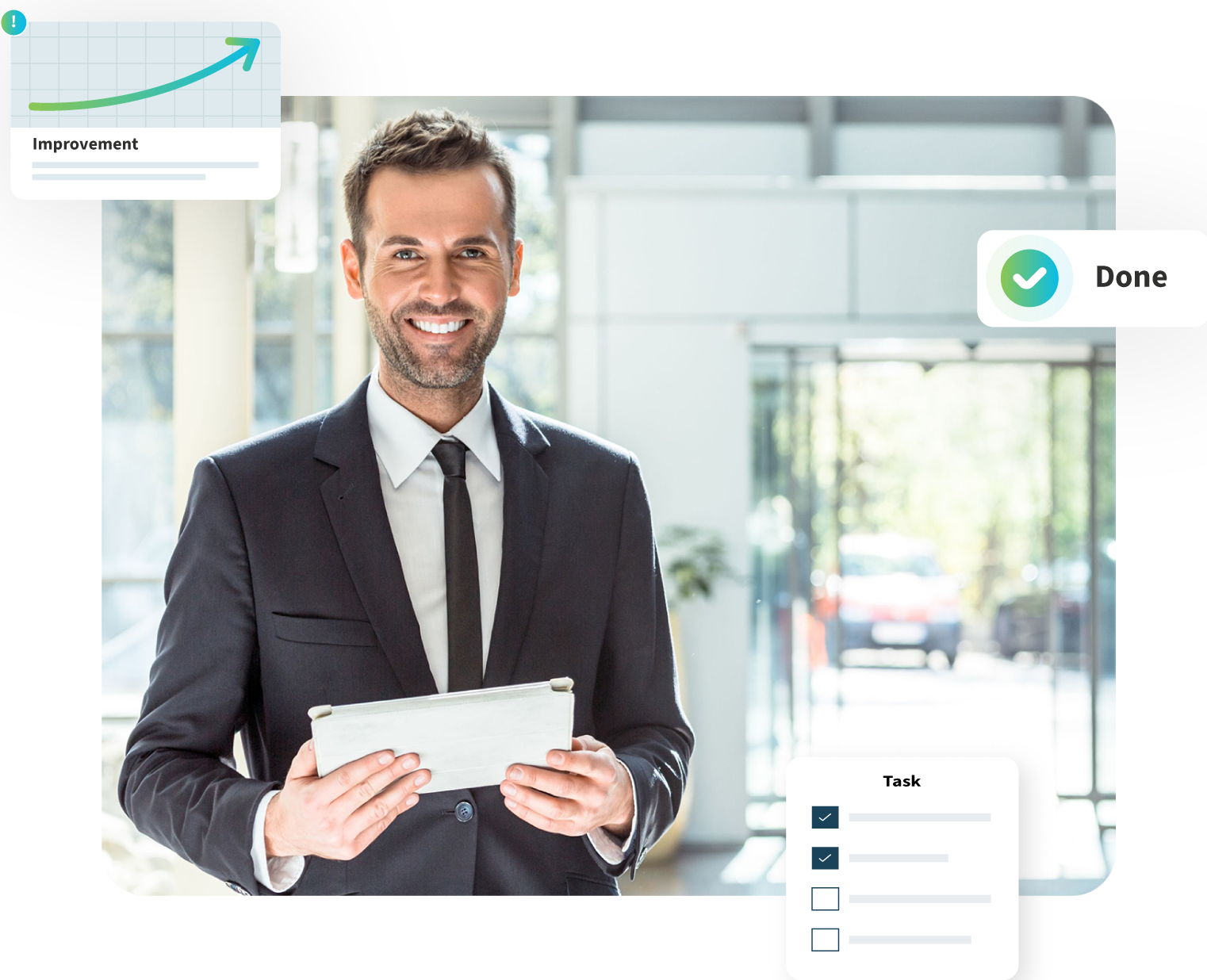By Doug Rice - Published in Hospitality Upgrade. I first wrote about digital tipping two years ago, when the pandemic had led many consumers to prefer contactless interactions. The idea was just emerging then, and the products still had rough edges. Two years later, digital tipping is clearly emerging as a trend, with at least 10 to 12 companies in the field having gained some early traction. However, it is still far from a mature application, and many hotels are struggling with whether and how to implement it. Friction for guests, tipped staff, and hotel accounting staff is lessening, but it is still not as easy as it needs to be.
Many hotel finance departments are familiar with Evention, and think of them when they hear the words “digital tipping.” This is incorrect. To be sure, Evention is an important player in distributing and accounting for tips at catered events. But digital tipping refers to customers tipping workers using only their phones (or another device), without cash. Evention does not currently support this, although they do manage some of the back-office processes required for any kind of tips. I would not be surprised to see them move into digital tipping, but so far they have left the field to others.
Digital tipping matters because many hotel staff, and particularly housekeepers, have long depended in part on cash tips, yet guests are carrying less and less cash. The Federal Reserve recently reported that the share of consumer payments made in cash dropped from 31% in 2017 to 20% in 2021. If that trend continues, we could be a cashless society in about six more years. If staff cannot earn as much in tips, then hotels will need to raise wages to attract and retain them. And attracting and retaining staff has become the number one issue for most hotels coming out of the pandemic.
Early adopters have found other benefits of digital tipping. Cash tips went largely unreported, and often caused human resource issues, either because staff pocketed tips that should have been pooled, or because unpooled tips were allocated according to “finders keepers,” which often meant that the person receiving the tip may not have been the one who performed the associated service. This has been particularly true for longer stays, where a different housekeeper might clean the room on the departure day and collect a tip that was intended mostly for the one who had cleaned it on each of five previous days.
Additionally, cash tips were largely untracked, meaning that it was impossible to use them to measure staff performance. Digital tipping, on the other hand, is both measurable and can come with a rating of the service, which managers can correlate with tip amounts to better understand which employees contribute the most to guest satisfaction.
Digital tipping can create value for hotels in three primary ways.
- It can reduce wage pressure for tipped employees and provide both monetary and survey-based feedback that helps motivate them. Knowing that they got a generous tip is one thing; understanding WHY can help them improve and earn more in the future.
- Higher compensation and more feedback can reduce front-line staff turnover, reducing the time and cost for managers to recruit, hire, and onboard replacements.
- It is a convenience for guests. With less cash in their wallets, there are more situations where the guest wants to tip but lacks the desired change. This may mean a trip to the front desk (often during busy check-out hours) to get smaller bills, or simply foregoing the tip altogether. Digital tipping also simplifies expense account preparation, as there is a record of every tip.
Vendors of digital tipping products have tried hard to measure the impact of digital tipping on housekeeper wages (housekeepers account for about 85% of total tips in hotels). Unfortunately, this is not simple. Cash tips often went unreported, making it difficult to determine how much digital tipping replaces cash tipping, vs. increases the total. Nevertheless, focus groups, surveys, and other evidence yield estimates of tips averaging $1 to $4 per hour for housekeepers. This is a wide range, and I suspect the truth is somewhere in the middle. If we take $2 as a guess, that is about 12% of the salary of the average housekeeper. That means tipping is worth about 12% of a hotel’s housekeeping labor cost. If half of that goes away due to guests carrying less cash, it represents a 6% increase in the hotel’s salary budget to keep housekeepers at the same pay level.
Your hotel’s results might be higher or lower. Several of the vendors reported that the hotels that generated the strongest tips were those that communicated the option most effectively to guests. To be sure, there is a fine line between soliciting tips (which many hotels want to avoid) and making sure that guests who want to tip know how to do so without cash. But there are many approaches, and most hotels should be able to find one that strikes a reasonable balance. One executive noted that restaurant wait staff receive tips consistently while hotel staff do not; he attributed this in part to the seamless (but highly visible) integration of tipping into the restaurant payment process that makes tipping easy – and hard to accidentally forget.
My research for this article was supported by generous contributions of wisdom from executives at companies providing digital tipping products, including the CEOs and/or co-founders of Canary Technologies, eTip, hifive, TipQwik, TipYo, Unifocus, and youtip. Canary Technologies and Unifocus are established companies that have added tipping components to their existing product suites, while the others are earlier stage companies focusing primarily on tipping and, in some cases, feedback and staff motivation.
Components of Digital Tipping Solutions
The solutions on the market all manage various aspects of digital tipping, but not every solution covers them all. A full digital tipping solution includes communication vehicles to get the message to guests on how to tip; one or more ways for guests to activate the tipping process; a way to specify the amount of the tip, what department or service it is for, and in some cases the staff member who should receive it; a way to collect payment; a way to determine the allocation of tips to staff; the collection of guest feedback about the employee or service being tipped; the transmission of funds to the hotel or tipped employee; payroll compliance; management reporting; and collection of fees to support the solution (which may be from the hotel, the tipper, the tipped staff member, or a combination).
General Considerations
One vendor I spoke with described the digital tipping environment as still the “Wild West,” and having seen these seven products, I would agree. If three of the key evaluation criteria are flexibility, security, and simplicity, most of the vendors did well on the security aspect, but only a few were very flexible. On simplicity, none of them made tipping as simple as I would like as a guest, but some made it easier than others.
In implementing digital tipping, it is important to understand your primary objective and find a solution that aligns with it. Some hotels want mostly to increase tips, thereby increasing their attractiveness as an employer. Others are more oriented to employee recognition, of which tips are just one element. Still others want to improve the guest experience by making it convenient to tip without cash. You can do all three, but there will be tradeoffs.
It is also important to understand the touchpoints within the hotel where it should offer tipping. Some solutions may work quite well in certain use cases (such as housekeeping) but may be more cumbersome or awkward for others. Work through and assess the guest experience in each case. Tip pooling can simplify the guest experience by eliminating the need to identify the specific staff member but can also have human resources implications. Your tipping solution should not dictate whether a department should pool tips, so look for a solution that allows you to set up (or change) each department to pooled or not as your needs evolve.
Consider every potential use case that may be relevant in your hotel. Housekeeping typically accounts for around 85% of tips and is therefore an important focus, but there are plenty of other staff members who may earn tips every day or at least occasionally. These include valet parking, bell service, bar service at banquets, golf caddies, golf beverage carts, the concierge, spa therapists, pool attendants, front desk staff, and even maintenance. Consider food and beverage outlets and room service attendants as well: while most tips are usually collected using a line item on the point of sale check, it is not unusual for bartenders and wait staff to also receive cash or digital tips, most commonly when the guest wants to make sure that the tip specifically goes to that person. Several of the vendors shared war stories about bartenders or front desk staff receiving tips as large as $50 or $100 through their tipping platforms – amounts that may be quite meaningful for low-paid staff.
Communication and Activation. Digital tipping is effective only if guests know that it exists and how to activate it when they need it. Several vendors commented on the importance of the hotel communicating the program well. One said that they could tell within the first week whether the hotel was doing that, just based on the number of tips processed.
There were three basic means of activating the tipping process. Some vendors support only one, others do two or all three.
- QR codes were the most common option. These were usually generic (one QR code per hotel) but some vendors could personalize them to tip a specific employee or department. Hotels could display them on a tent card in the guest room, on stickers, or on cards or envelopes left by individual housekeepers. They could print them on room keycard stock or on keycard packets, on baggage tags, or on valet parking tickets. They could display them on the TV screen in the guest room. And of course, they could place QR codes in public areas.
- A URL sent via text or email, or printed on the folio, is another common option. However, texts and email can only reach guests for whom the hotel has contact information, and many guests never get or review their folio.
- Embedded functionality within brand or guest journey apps can facilitate tipping at any of several times: at checkout; at check-in; as a stored profile preference (e.g., to specify a nightly or per-cleaning housekeeping tip for all stays); any time via a “leave a tip” menu item, or as part of other tippable transactions handled by the app (such as requesting extra towels or a shoe shine).
QR codes deserve special mention. The press has widely reported cases where fraudsters produce their own QR codes and deploy them in situations where users will scan them and use them without realizing they are fraudulent. These QR codes can take you to a site that may appear legitimate, but that simply takes the tipper’s money. Neither the tipper nor the tippee knows it has happened, so the likelihood of detection is low. QR code fraud has become a major issue for digital parking meters, to the point where one major city’s parking website has a front-and-center banner warning people NOT to scan QR codes placed on parking meters.
The risk in hotels may be lower than for metered parking, but it does exist. To be sure, it would be difficult for a fraudster to replace QR codes in every guest room, but less difficult to replace ones in public locations such as a valet parking stand. Whether the returns are enough to attract the criminal element remains to be seen, but the risk is not zero. Where there is a way, digital thieves will find it.
Some vendors report doing URL scans to prevent fraud, but this does not really help. First, this could only work if the guest is using the hotel’s Wi-Fi, and many guests never bother to connect their phone to Wi-Fi. Second, it only works if the fraudster’s website URL or IP address is known, which will not usually be the case.
While the security concerns are real, they would not stop me from using QR codes. They would, however, lead me to minimize the use of easily replaceable ones in public spaces, and even in guest rooms. Printing them on keycards, keycard packets, bell-stand luggage tags, and valet parking tickets is less risky. Most guests get keycards and packets, so this would be my first choice for general tipping (supplemented by non-QR mobile app options for those who use mobile keys).
While possible, most hotels will find individualized QR codes (one for each housekeeper, for example) to be challenging to administer. Every time there is a new employee (at least a weekly occurrence in many housekeeping departments!), they will need a stack of customized cards printed before they can start earning tips.
Also, while tipping via a brand app can be quite effective, it should not be the only option, especially if the brand app is a native (downloaded) app. You cannot communicate digital tipping capabilities through a brand app to guests who do not download it – which is usually the majority.
Specifying the Tip. This is where the tipper specifies how much to tip and who should receive it. With pooled tips, this may simply be the selection of a department. With non-pooled tips, it is usually handled by either selecting a department and then an individual (often showing just first name and last initial for privacy), or in the case of housekeeping by getting (or already knowing) the guest’s room number. If the hotel uses individualized QR codes, then the individual to be tipped may be identified that way instead.
Some of the solutions collect feedback along with the tip, typically including a star rating and a place for comments. This can be quite powerful both as a motivator to staff (the comments can help them understand what leads guests to tip more), and as a performance measurement tool for management. While most of the tipping platforms can produce reports indicating how much specific employees earned in tips, correlating this with feedback enables managers to understand who their most-appreciated staff are, and why.
Several vendors said that they were starting to see interest in “suggested tip amounts,” like many restaurants now put on point-of-sale checks. Some of them were starting to support one-click options for the tip amount.
Payment Processing. This is a significant point of difference for the tipping solutions I reviewed. A few of the providers have integrated with common hotel payment gateways such as Elavon and Shift4, which means that the hotel collects tips through their existing merchant account. This approach can optimize credit card processing fees (fewer merchant accounts and more volume per account) but may come with higher integration costs. More commonly, the tipping platforms collect payment through a separate payment gateway, most often Stripe. The hotel may be the merchant of record, in which case the vendor helps them get set up and the funds go straight to the hotel. Alternatively, the tipping solution vendor may be the merchant of record, collecting the funds and either disbursing them to the hotel or paying the tipped employees directly.
In terms of payment options, the vendors agreed that Apple Pay and Google Pay were by far the most important, followed by manual entry of credit card details. A few supported other options such as PayPal but reported minimal usage.
A few of the solutions offered folio charges as an option. From a guest perspective this is preferable especially for business travelers, as it consolidates the tips with other hotel-related charges and enables them to submit an expense report without having to tally up tips individually. This of course requires integration with the hotel’s property management system, which may be straightforward for some but challenging for many.
Most of the solutions do not touch credit card data directly; they instead use a payment capture solution provided by a secure payment gateway such as Stripe’s. The only exception I noted was Canary Technologies, which supports its own PCI Level-1 compliant solution as well as multiple third-party gateways.
Matching and Allocating Tips. There were subtle differences in approaches to determining who should receive the tips processed through the platform (since many tips will not identify a specific employee), and these need careful review to ensure the desired results. The more the tipping solution can do without action from the hotel, the less the burden on back-office staff.
Where a hotel or department pools tips, the tipping solution can either pass off the pool totals to the hotel to allocate using its existing systems, or it can calculate the splits first. The latter approach requires knowledge of allocation rules and metrics, such as hours worked during the tipping period. Some solutions could obtain this from an interface with or file handoff from the time-and-attendance or other human resource system; others required manual entry.
For hotels or departments that do not pool tips, most of the solutions can report housekeeping tips by room number, as well as any tips directed to a specifically identified employee. Where reported by room number, the hotel must provide information on which room attendant cleaned which room, either as a handoff from the housekeeping or another system or as manually entered data. The accuracy of this data will depend on how consistently the housekeeping staff or system records which attendant cleaned each room, since assignments often change several times during a typical day and supervisors may not always update manual rosters.
Tipping solutions that allow guests to tip a particular staff member usually load names (often just first names and last initial) by department; a few support photos for staff that want to provide them. The tipper selects the department and then the individual they wish to tip. Larger hotels may need to find ways to filter what could otherwise become extensive lists.
Paying Out the Tips. There were two different approaches to payouts. One option is to upload a file of (or manually enter) tips earned per employee the hotel’s payroll system each pay period. If the tipping solution vendor or its payment partner collected the funds, then they deposit them into the hotel’s account. For folio charges, the hotel will receive the funds upon settlement of the folio charge, so only accounting entries are necessary to allocate them to tips.
The other approach, offered by a few of the solution providers, is early wage access. In this case the vendor transmits tips periodically (often daily, sometimes weekly or when the amount reaches some threshold) to the employee’s bank account. Some providers have partnered with banks to establish accounts specifically for this purpose. This approach has the advantage that staff can receive their tips as often as daily. Early wage access has become common in restaurants and ride-share jobs and can be an important leveler in the competition for workers.
While there is a lot to recommend early wage access, I am not sure it makes as much sense to do it only for tip income as it does for all compensation (meaning wages as well as tips). It does, however, offer hotels an option to avoid integrating the tipping solution with their payroll system.
Payroll Compliance. In the US and many other countries, tips are taxable to the employee as wages. Historically, many cash tips have gone unreported, and tipped staff often do not understand (or care) about the legal obligation to report them. Digital tips are also taxable, but the rules for tax reporting and compliance are still evolving, and each solution interpreted their obligations differently. If there was a consensus, it was that the employer of record “should” report tip income. This may be the hotel (whether distributing tips itself or through its tipping vendor as its agent), or it may be the tipping vendor. If a U.S. hotel is the employer of record for the tips, then it is supposed to report them on the employee’s W-2 form along with other compensation.
Some tipping solutions that act as the hotel’s agent will generate 1099s for distribution by the hotel if the hotel does not want to process tips through its payroll system. Other vendors said that the Internal Revenue Service frowns an employer issuing both a W-2 and 1099 to the same employee.
If the tipping solution is the merchant of record and not acting as the hotel’s agent, then it should issue 1099s to employees who earn over the $600 annual threshold in tips.
Some vendors did not get involved in tax compliance at all, leaving it up to the hotel or employee. While the employee is supposed to report cash tips to the employer, and the hotel is then supposed to include them on the employee’s W-2, if for any reason it does not, the employee is required to file IRS Form 4137 to self-report the tips. Needless to say, compliance is low.
Because digital tips fall in a gray area where the tax law has not yet been well defined, hotels should be wary of making long-term commitments to solutions where the tips do not end up on the employee’s W-2, as that is the only approach that experts see as uncontestable. Consultation with an employment law specialist may be appropriate to understand whether any specific approach carries employment risks in your jurisdiction. In particular, the rules on the tipping company acting as “agent” for the hotel vary from one state or country to the next. But in any case, with the compliance rules still evolving, you will want to be sure that your vendor can support future changes as the tax rules become clearer.
Compliance can get trickier when a third-party employer, such as a contract valet parking company, is involved. The hotel or its tipping vendor will receive the tips, but the third-party employer may not be willing or able to allocate and disburse them. In this case the tipping company or hotel may need to pay out the tips directly, and deal with year-end tax reporting via 1099s if the tips exceed the $600 threshold.
Several of the vendors commented that reporting digital tips to tax authorities may put off tipped staff, who in the past may have just pocketed cash tips without paying tax. While understandable, there is a good parallel from the restaurant industry, where tipping went from cash to mostly noncash a few decades ago. Once most diners started added a tip to their credit card bill, tip income for wait staff rose, even after taxes.
A last point on compliance is that if the full tip amount is not paid to the employee (for example if the vendor deducts a service fee), some jurisdictions require disclosure of that fact to the tipper at the time of the tip.
Management Reporting. Two major categories of reports bear scrutiny. Firstly, if the hotel will be processing payroll, and if there is not an automated handoff of tip distributions for inclusion, then you will want to ensure that there is a report that will allow you to easily enter tip data into each payroll cycle.
Second is reporting on staff performance. This should include both information on tips earned by each employee, but also any ratings or comments submitted by guests as feedback. Management should pay close attention to what guests say in comments when they tip generously – or sparsely – as this can help all employees deliver better service, get better guest reviews, and earn more tips.
Hotel groups will also want comparative reports that can help them assess how well each hotel is implementing digital tipping, and to identify any anomalies that may require attention.
The Business Model. Tipping solutions will cost a minimum of about 3% of the tipped amount, which covers the credit card fees and a small profit margin. Realistically, all-inclusive costs in the 5% to 10% range are more the norm. All-inclusive costs may include a SaaS component, onboarding fees, fees for design, printing, and production of collateral materials, and transaction fees.
The jury is still out on who should pay. A few of the vendors have staked out specific positions on this question, while most of them are flexible. Three different parties can (in principle) pay some or all of the associated costs.
- The hotel can pay, essentially providing digital tipping as a fully included employee benefit.
- The vendor may assess a convenience fee to the tipper. I have not found any research that tries to measure what impact this may have on the propensity of guests to tip or the amount of the tip. It may not be large, but it can only be negative.
- The employee may receive tips after deduction of a processing fee. This may have implications for employee perception of the program, as they are more used to receiving cash with no deduction (and often the perception that no taxes apply, either).
Whichever model you settle on with your vendor, there was widespread agreement that it was important to communicate it transparently to staff and guests. If the hotel pays, then be sure to advertise it as an employee benefit, no different from health insurance or a 401(k). If the tipper pays, then disclose the convenience fee clearly at the outset to avoid surprising the guest just as they are ready to confirm the tip. And if the employee pays, help them understand that a small fee will help them retain and increase their tip income in an era where guests no longer carry cash.
Conclusion
Digital tipping may still be in its early days, but it is here to stay. I do not expect most of the companies I spoke with will still be around, independent, and doing the same thing in five years, but they are pioneers blazing a trail that others will follow. One or two of the better ones will likely be acquired by companies with more diverse portfolios of guest journey, human resource, or back-office services. It will be interesting to see which digital tipping approaches succeed, and when it becomes mainstream.






